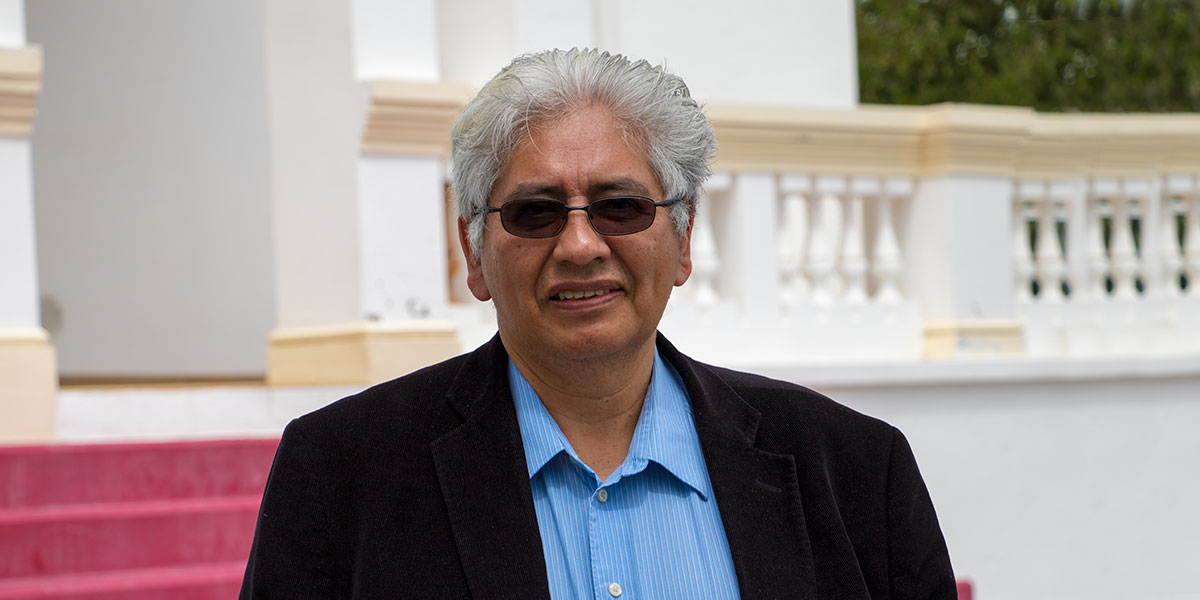Carlos Castillo-Chávez

Critical problems are solved with critical masses
In 2006, an editorial published by Arizona State University named Carlos Castillo-Chávez one of the most important scientists in the United States for his research. He has worked at Cornell University, Arizona State University, and has collaborated with several universities in Latin America and the United States. However, his latest achievements have been social. The prominent scientist states that scientists’ critical masses, rather than just a scientist’s brilliance, are crucial when it comes to problem solving.
YT: How can we make Latin America have the critical mass needed to impact the world?
CCC: Talent exists. What we usually lack is structure. Many people think that investing in science is a waste, unless there is a guarantee that you will have the cure for cancer within a year. What the world’s greatest economies teach us is that science has developed simply for decision and investment purposes. We make decisions to create universities because knowledge is the key to move forward economically and socially. Critical masses develop on their own.
World War II was the scenery of terrible things that happened that showed us how something that was built with so much effort and difficulty can be easily destroyed. During that time, for instance, there was a school of mathematicians in Poland. It was one of the best in the world, but because of the war most of them disappeared. Although there is a good community of mathematicians now in Poland, it never quite reached the glory it had before WWII. Back then a very small population had a high concentration of the best mathematicians of the world. Building is hard, but unfortunately destroying is very easy.
Regaining the spot you used to have in science is extremely hard. It took the United States over 100 years to build the first group of well-trained scientists in the country. Compared to the rest of the world, the US was still an infant in terms of science by the end of the XIX and beginning of the XX century. This way, the critical mass grew with the help of immigration and now they have one of the best systems of universities around the world and as a result one of the best economies of the world. Take California, for instance, that has a university system of the highest standards and is the fifth economy of the world.
YT: What does science have to do with politics?
CCC: Science has a lot to do with politics and most of the time we as scientists don’t like to talk about that, but just to give an example, there is so much that has been invested in the United States in research for the cure of prostate cancer. Why? Because most of the senators and congressmen were men. Breast cancer is just as interesting scientifically as prostate cancer, if not more, but there isn’t any investment because there wasn’t a voice there to say “Why not study breast cancer?”
In that same country we could study the evolution of insects as a consequence of the use of pesticides, but it was harder to investigate the impact of pesticides in Mexican workers. So, who makes those decisions? Politics, but scientists too, because once we specialize in something we think it is the most important thing in the world and we want to get all the funds possible.
Having a vision that distributes people’s money for research requires a visionary policy that sheds light not on which science is better than the other, but rather on what type of science needs investment because it can produce more for the country. There is no right answer, but there has to be a decision because when you have limited resources everybody thinks that their science is the most important of the world.
YT: How do we make those with decision-making power and public policymakers give importance to what could be called a public policy on scientific research?
CCC: It’s all about education: education everywhere and at all levels. Back in the universities where I was in the United States I used to joke about how I panicked whenever there was a new dean because I used to think “Now I have to educate them again on the importance of diversity and supporting different groups, not because they couldn’t understand, but because I had to explain it with reasons, examples, and facts so that they could really say “ok, this is worth supporting”. It is always about the constant debate of what is important and what not, or what needs to have public support and what not.
In order to maintain a balance, the important thing is that those who make decisions on how to allocate resources can represent the society they support. If we only have male advisers then they will favor prostate cancer. If we only have female advisers then it will probably be breast cancer. If we have blacks and Hispanics they might think it’s better to invest in diabetes. These type of decisions are enriched with diversity, where there is a dialogue to decide which way is the best to invest these resources in order to benefit society. There is not just one answer or a clear answer, but citizen participation is key for this.
Carlos Castillo-Chávez reminded us of something that sometimes history allows us to forget: science is built on collaboration. Scientific results that change the world never depend on just one scientist, but on the participation of critical masses, public policymakers and citizen participation. This collaboration is fundamental and can be achieved through discussion. There is no perfect formula or correct answer: it is dissimilar perspectives what helps to build science.